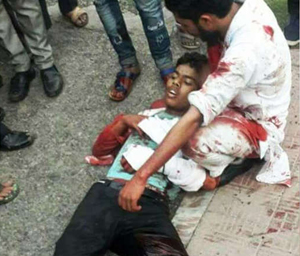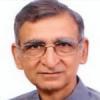The lynching of Junaid (June 2017) in the outskirts of Delhi, in a train, did come as a saturation point in the conscience of large sections of society. To express their anguish people came to streets in great number in a largely spontaneous protest, ‘Not in My name’. While many critics criticized and undermined this expression of pain and anguish of the sections of society, it did catch the attention of the national and international media. The result was that our Prime Minister who has been keeping maun (silence) on the issue came forward to say that ‘violence in the name of Cow is not acceptable’; and that Mahatma Gandhi would not have approved it. This bland statement was hardly of any effect as just few hours after this; two more Muslims were done to death in Jharkahnd.
 The earlier such statement from him was after the lynching of Mohammad Akhlaq. (October 2015) At that time also nearly two weeks after the lynching he opened his mouth on the issue. That statement was also bland and hardly had any effect on the Gautankwad (terrorism related to cow protection) as lynching’s continued. So either Mr. Modi is ineffectual in controlling his cabal, the Hindu nationalists involved in such violence, or that they also know that Prime Minster is making such statements for saying’s sake, and that they can continue their business irrespective.
The earlier such statement from him was after the lynching of Mohammad Akhlaq. (October 2015) At that time also nearly two weeks after the lynching he opened his mouth on the issue. That statement was also bland and hardly had any effect on the Gautankwad (terrorism related to cow protection) as lynching’s continued. So either Mr. Modi is ineffectual in controlling his cabal, the Hindu nationalists involved in such violence, or that they also know that Prime Minster is making such statements for saying’s sake, and that they can continue their business irrespective.
Mr. Amit Shah, BJP President, defending the present regime said that the lynching’s taking place in earlier regime in 2011, 2012 and 2013 were more in number. This is a total lie. According to the data collected by IndiaSpend, based on the content analysis of media reporting, “Muslims were the target of 51% of violence centered on bovine issues over nearly eight years (2010 to 2017) and comprised 86% of 28 Indians killed in 63 incidents. As many of 97 per cent of these attacks were reported after Prime Minister Narendra Modi’s government came to power in May 2014, and about half the cow-related violence — 32 of 63 cases –were from states governed by the Bharatiya Janata Party (BJP) when the attacks were reported, revealed our analysis of violence recorded until June 25, 2017.” How easily Mr. Shah wants to distort the facts to defend present government!
As such the overall dissatisfaction, deflected anger also leads to lynching, as seen in the tragic case of the lynching of Ayub Pundit in Kashmir. The insanity which comes up in the mob is most condemnable. In case of lynchings in the name of cow, the factors involved are multiple. With the rise of Hindu nationalist politics many a dalits were earlier killed in Gohana for example when they were skinning the dead cow. Adding on to this agenda of polarizing society on the issue of cow, last few years as Modi Sarkar has come to power there are overt statements for Gau Raksha (Cow Protection). While the laws of cow slaughter ban had already been there, with BJP ascendance the laws have been given rigid twist and along with demonization of those eating beef. In Gujarat the first laboratory of Hindu rashtra, even the consumption of non vegetarian food has been looked down upon. Now all over the country ‘holiness of Mother Cow’ is being propagated and imposed on the society with state patronage.
In the context of Akhlaq’s lynching Mr. Mahesh Sharma, union culture minister stated that the murder was an accident. He was also the one to go and put tricolor on the body of the accused of the murder, when the accused died in the prison due to some illness. Another BJP leader Mr. Sangeet Som had threatened that if those who have been arrested for Akhlaq’s murder are punished, a befitting reply will be given.
What are the major observations on these cases of lynchings? Eating beef, slaughtering cow and transporting cow had been the major pretext for violence. The victims of this constructed anger are mostly Muslims, while dalits have also been flogged and tortured. Muslims are presented as beef eaters, cruel, not respecting Hindu sentiments about cow, apart from other biases which have been already spread against them. The social scene has been so constructed that due to these biases and regular instigations, the popular adage, ‘innocents until proved guilty’ has been made to stand on its head to mean ‘Guilty unless proved innocents’ for Muslims. The ‘silent social sanction’ for killings and upholding the act is couched as ‘defense of Hindu religion’ and now Hindu symbol of cow rules the roost. The benign animal is the pretext for ghastly violence. To jack up their agenda there are false claims by BJP spokesperson that Gandhi wanted a ban of cow slaughter ban. He opposed the idea on the ground that there are many who consume beef, and that country belongs to all.
Lynching’s are not just law and order problem. These are part of, or rather byproduct of Hindu nationalist propaganda against Muslims. The propaganda pertains to the Holiness of Cow and Muslims violating that. It is not a coincidence that such brutal acts have become part of social phenomenon, after Modi came to power. Gradually the intensity has been stepped up. Beginning from Modi’s own statements about Pink revolution, of greatness of Rana Pratap as he gave his life for protection of cows, to demonization of Muslims in the name of cow makes clear as to what is the underlying social psychology, which leads to these acts. The claims of ‘good governance’ bite the dust in the light of these atrocities,
Ayub Pundits lynching is equally painful one. There is also a need to understand the social psychology operational there and urgent need to combat that. Country wide the insecurity of religious minorities smashes the claims of ‘Acche Din’, as the polarizing agenda is taking huge leaps in the name of Cow and leading to lynching’s’ on regular interval.







Comments
Add new comment